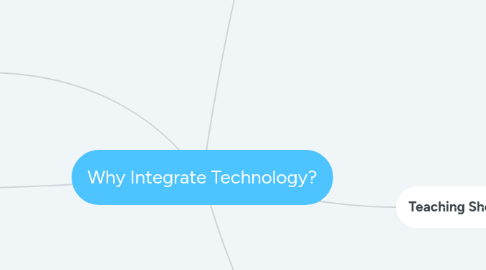
1. Students Are Different
1.1. Grown up with technology
1.2. Multimedia oriented-always on!
1.3. Technology is a must for future careers
2. The World Is Different
3. Standards Are Different
3.1. Level of technology competency expected
3.2. Should be knowledgeable of the standards for technology
3.3. ISTE Standards (Technology Standards)
3.3.1. Copyright & Fair Use
3.3.1.1. Educator
3.3.1.1.1. 3. Citizen c. Mentor student on safe use
3.3.1.1.2. 3. Citizen d. Monitor & Promote management of personal data
3.3.1.2. Student
3.3.1.2.1. 2. Digital Citizen c. demonstrate an understanding of and respect for the rights and obligations of using and sharing intellectual property.
3.3.2. Cyberbullying
3.3.2.1. Educator
3.3.2.1.1. 3. Citizen a. Create experiences for learners to make positive, socially responsible contributions and exhibit empathetic behavior online that build relationships and community.
3.3.2.2. Student
3.3.2.2.1. 2. Digital Citizen b. engage in positive, safe, legal and ethical behavior when using technology, including social interactions online or when using networked devices.
3.4. Ohio Content Standards
3.4.1. English
3.4.2. Science
3.4.3. Math
3.4.4. Social Studies
3.5. Ohio Technology Standards
3.5.1. Cyberbullying
3.5.1.1. STRAND: Society and Technology- Topic 2
3.6. UDL Guidelines
3.6.1. Engagement
3.6.1.1. Recruiting Interest
3.6.1.2. Sustaining Effort & Persistence
3.6.1.3. Self Regulation
3.6.2. Representation
3.6.2.1. Perception
3.6.2.2. Language & Symbols
3.6.2.3. Comprehension
3.6.3. Action and Expression
3.6.3.1. Physical Action
3.6.3.2. Expression & Communication
3.6.3.3. Executive Functions
4. Skills Are Different
4.1. Will help adapt to skills in 21st century
4.2. More technologically saavy than in the past
4.3. Should adapt curriculum to new skill set
4.4. 21st Century Skills
4.4.1. Creativity and Innovation
4.4.2. Communication and Collaboration
4.4.3. Research and Information Literacy
4.4.4. Critical Thinking
4.4.5. Nonlinear Thinking
4.4.6. Visual Literacy
4.4.7. Visual Thinking
4.4.8. Spatial Thinking
4.4.9. Digital Age Reflection

